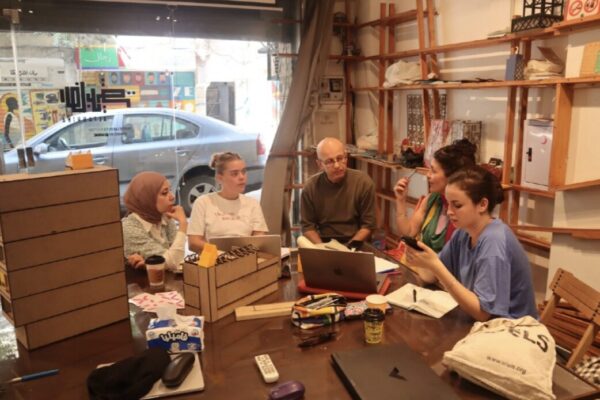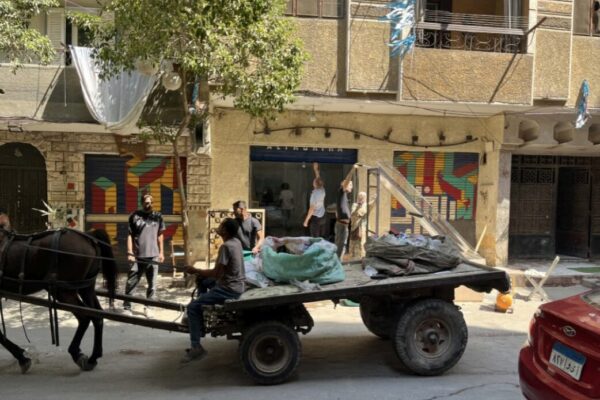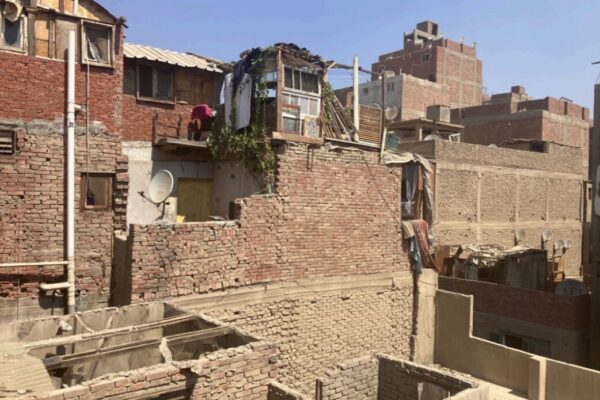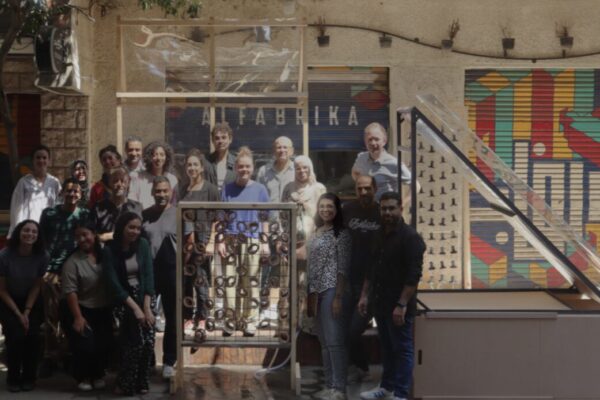“My most valuable lessons, deepest insights, and best connections were established through other people”.
Last September, I traveled to Cairo to take part in an international workshop focused on building prototypes for natural ventilation in the self-built neighbourhood of Ard al-Lewa. It felt like a full-circle moment: back in 2017, during a university trip, I had studied Egypt’s traditional systems of natural ventilation and explored how these could be reinterpreted in a contemporary context. Returning years later to work hands-on, building physical prototypes and testing ideas within a real urban environment, was an opportunity I couldn’t miss. The workshop began with a city tour, offering us a layered view of Cairo’s social and urban fabric. It sparked lively conversations between Egyptian and international participants, revealing how deeply history shapes daily life. In Ard al-Lewa, despite its density and chaotic appearance, traces of the neighbourhood’s agricultural past remain visible. Men and boys passed through the streets on horse carts, collecting recyclables or delivering vegetables to market stalls. There was a sense of community, everyone seemed to know one another, forming a tightly woven social network in the area. When we began conceptualising our prototypes, our main challenge was to design something that the local community could easily replicate.
This discussion changed how I think about design and social engagement. In many contexts, innovation istreated as a product to be sold, marketed, and promoted. But the Egyptian designers in our team emphasised a different model: here, you don’t need to “sell” ideas. If you demonstrate that something works and share how it’s made, people will adopt and adapt it themselves. All we needed was one successful prototype, planting the seed.
As the workshop progressed, we worked daily in CLUSTER’s open workshop space, right in the heart of Ard al-Lewa. Passersby often stopped to ask what we were doing, sparking spontaneous conversations and exchanges. Working on-site created an immediate dialogue between designers and residents. Over time, seeing the same faces each day built a sense of connection and belonging, even if only temporary. One other eye-opening moment came when theory met reality. Our initial idea was a simple windcatcher that could be mounted atop existing building shafts to enhance airflow. Yet when we went to install it, we discovered a far more complex roofscape than we had imagined, filled with pigeon towers, goat sheds, and improvised structures. Our neat hypothesis had to bend to the messy reality of lived space.
Adapting our prototype to fit this environment became as much a design lesson as asocial one: theory must always meet the ground with humility.
Would you also like to benefit from our Travel Grants? Our applications are open all year! Find out more about the application procedure and criteria here





